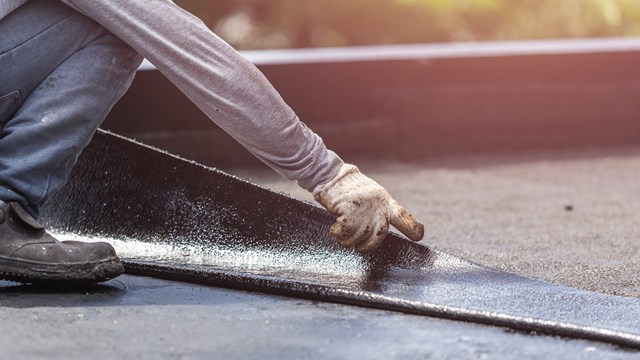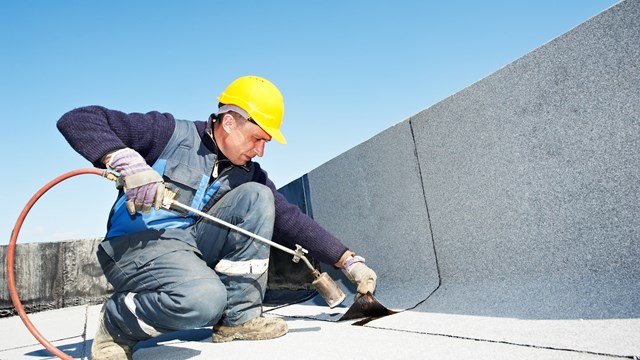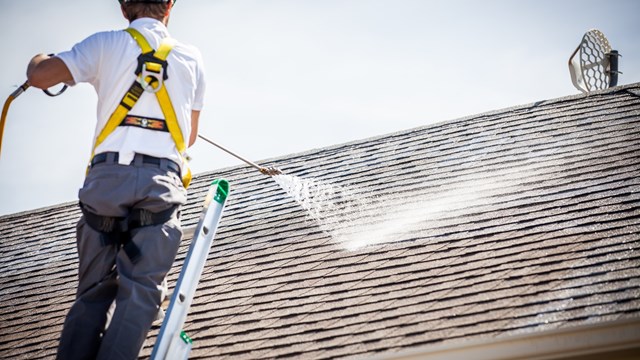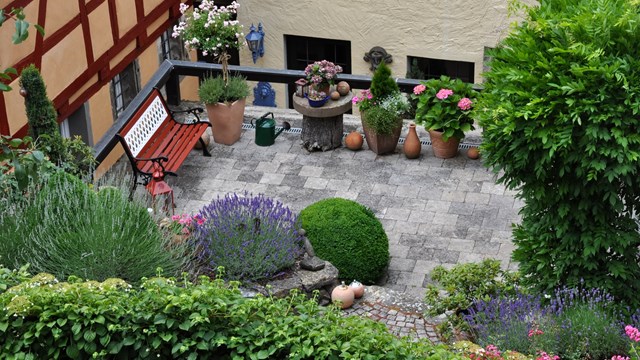
Projects, projects, projects – do they ever end!? The short answer is...nope, they sure don’t.
Whether it is New England, New York, Florida or California, the nature of condominium projects (i.e. roofing, siding, decks, pavement, etc.) is essentially the same. The condominium industry has adopted a 30-year ‘lookout’ when it comes to planning and executing major repair/replacement projects. Unlike a single-family homeowner, who can scramble to find the funds to replace the shingled roof on their house when the time comes, a condominium association should (must!) begin planning for the expenditure when the project shows up on the radar 30 years, or less, down the road.
A crucial component of knowing how to plan for major upcoming repair/replacements is understanding how long certain key elements – I call them the Big 4 repair items – can be expected to last, and how much they cost, on average, to replace. The Big 4 are roofs, siding, decks and pavement, and they always dominate the discussion about reserves and construction costs. However, ancillary items such as retaining walls, fencing, swimming pools, tennis courts, septic systems and/or wastewater treatment plants can not be left off the list. This column will focus on typical suburban townhouse construction, but the concept is the same for urban high-rise buildings as well.
Roofs
Most townhouse condominium buildings are roofed with asphalt shingles. Up until the 1990s, the vast majority of these buildings were covered with standard, 20-year, three-tab shingles. Most of the time, the two decades of expected life held true, although some defective shingles that found their way into the housing industry resulted in premature replacement on some properties. Over the last 20+ years however, much better and longer-lasting shingles have become commonplace. The newer shingles project to last 30, 40 years or even longer.
It’s not just about the shingles though; related items (things like ice and water protection, ridge and soffit vents, skylights, gutters, and downspouts, to name a few) all play a role in the scope and pricing of a major roof repair or replacement. For planning purposes, $7 per square-foot starts the discussion – though, of course, the amount varies depending on particulars. And if you are halfway through the projected useful life of your roof(s), hopefully you have half the money needed for a replacement. I have been on many properties where the long-time residents talk about the ‘new’ roofs, only to find out that those ‘new’ roofs are actually 15 years old! Shingle reroofing projects at townhouse condominium complexes regularly run into the millions of dollars.
Siding
Similar to roofing, siding materials have evolved over time. The great majority of buildings constructed in the 1980s and 1990s were clad with wood siding and wood trim (with wood windows also). The last 20 years have seen significant increases in the use of alternative materials, particularly vinyl siding, PVC trim and fiber cement siding. Most of the earlier, wood-sided buildings lasted about 30 years before they required residing. The newer materials should last longer – but time will tell.
Generally speaking, $10 per square-foot starts the discussion concerning residing. Vinyl is less; wood and fiber cement are more, but here’s the kicker: 95 percent of the time, windows and doors are owned by the individual unit owners, so that expense is generally assumed by the resident. Usually, the original windows and doors are a comparable quality to the siding and trim, and should be replaced at the same time.
Decks and Pavement
When it came into regular use in the 1980s, pressure-treated lumber was going to be the be-all, end-all solution to concerns about wood deteriorating as it was exposed to the elements. Salesmen at the time swore up and down that you didn’t have to stain it or paint it, and it would last 50 years.
As it turns out...not so much. Left to weather naturally, the exposed wood splintered, split and twisted to the point where decks became unacceptable from an aesthetic standpoint, not to mention structurally unstable. Add to those concerns poor flashing and attachment to untreated exterior wood-framed walls and insufficient concrete footings, and you have major safety issues. The ‘early’ townhouse decks lasted 15-20 years. With some of the newer materials like PVC decking, manufactured railing systems, galvanized steel brackets, screws, and so forth, these more modern decks could attain useful lives of 30-plus years. For discussion purposes, $55 per square-foot puts you in the ballpark for new decks.
When it comes to surface treatments, bituminous concrete or asphalt pavement in New England takes a beating. The soils in this area, combined with the winter cold, result in the ‘frost heaves’ we are all familiar with. The resultant movement of the pavement, combined with UV exposure and vehicle traffic, usually translates to a useful life of 25 years for properly installed pavement, give or take. Pavement replacement is generally not considered as high a priority as the other Big 4 items, and as a result, it is often replaced long after it should have been. While the poor aesthetic effect of buckled, discolored asphalt has a negative effect on property values, the safety and liability risk posed by uneven pavement is an even bigger concern. Thanks to this tendency to put off pavement repair and replacement projects, most of the properties we have worked with over the last 25 years can’t simply undertake a relatively inexpensive overlay or scarify/overlay approach fix for their pavement woes. If the underlying material is insufficient, or too deteriorated, either pulverization or complete removal and replacement is required if the expectation is truly 25 + years for the new pavement.
Once again, a realistic number is necessary to seriously plan for pavement replacement, and that number begins at around $25 per square-yard, with curbing, sidewalks and drainage concerns all play a role in a more accurate construction cost estimate.
Regardless of whether you’re governing a sprawling suburban townhome community, or an urban high-rise, it’s absolutely crucial for every board and board/management team to have a realistic, in-depth understanding of the remaining useful lives and replacement costs of common area items. Once the Big 4 have been addressed and you have turned your eyes to other common area projects (retaining walls, fencing), you will realize that some of the ‘new’ items you just fixed up have remaining useful lives of less than 30 years —so here we go again!
Ralph Noblin PE is the founder and principal of Noblin & Associates, an engineering consultancy based in Bridgewater, Massachusetts.









Leave a Comment